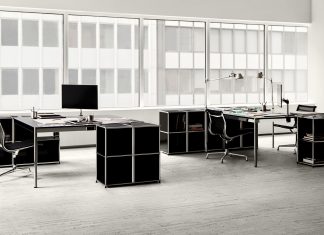Building a medium-format camera is already ambitious. Building one that reaches a stunning 3 gigapixel resolution feels almost impossible. Yet this DIY project turns a simple flatbed scanner into a giant format imaging machine that challenges everything we think we know about camera design. And it does so in a way that speaks directly to the evolution of sensor formats, a topic we explored in depth in The Philosophy Behind Cinema Cameras Sensor Sizes. This system is not a medium format camera in the traditional sense. It does not shoot real time video. It cannot capture motion. It cannot replace a Fujifilm GFX or a high end cinema camera. Yet what it achieves in pure resolution pushes far beyond most commercial systems and sits in the same conceptual space as the ultra large Big Sky camera discussed in This Is The Sensor Of The Big Sky Camera. And that is exactly what makes it remarkable.

The concept is surprisingly simple. Instead of using a regular two dimensional sensor, this builder salvaged the long linear CCD from a flatbed scanner. A scanner sensor is not shaped like a classic camera sensor. It is a thin strip that captures only one line at a time. The magic happens when that strip is moved across the imaging plane with extreme precision, capturing thousands of lines that are stitched into one enormous photo. The result is a still image that can reach over 80,000 pixels in width and roughly 40,000 pixels in height. That is how this homemade device reaches a stunning 3 gigapixel output. To put that in perspective, it surpasses anything available in consumer medium format today, even the most advanced systems we often analyze in articles like Understanding The Current Medium Format Camera Deals On Amazon. This is not the type of camera you take outside for a walk. It is heavy. It is slow. It is delicate. But when given a static subject and a bright light source, its resolving power is breathtaking.


Since the sensor is physically small in height but extremely long in width, the camera needs a lens with a very large image circle. This is where classic medium format glass becomes essential. The builder selected Pentax 6 by 7 lenses because they offer a massive projected area, plenty of manual control, and a clean mechanical design. Medium format optics are doing a lot of work here. They allow the camera to scan across a huge imaging field without losing sharpness or introducing dark corners. This is the same fundamental advantage that made Fujifilm design its GFX system, a topic we covered extensively in Fujifilm GFX Eterna 55 Pros And Cons. Although the DIY camera is nothing like a traditional GFX or Hasselblad system, both rely on similar optical principles. Large image circles. Longer flange distances. More breathing room for precision.


The reason this camera can achieve such a gigantic resolution is also the reason it is limited. Each exposure is not an exposure at all. It is a scan. A motor moves the CCD line across the focal plane with micrometer accuracy. The Raspberry Pi inside the camera reads the line data, processes it, corrects staggering between color channels, and writes the information into a 16 bit PNG file line by line. A full resolution capture can take several minutes. Anything that moves will be distorted or unusable. The process resembles the operation of museum grade scanning backs more than any everyday camera. It also connects to the same spirit of ultra large format imaging that drives experimental systems like the Sphere Big Sky camera explained in The Big Sky Cinema Camera. This is patient photography. Slow. Intentional. Precise.


This camera is not a cinema tool. It cannot shoot video. It does not solve problems of dynamic range or latency. It does not compete with large format digital cinema systems like the URSA Cine 17K, which pushes toward IMAX level filmmaking as discussed in URSA Cine 17K Bringing IMAX Filmmaking To The Masses. But it belongs to an interesting class of devices. It is part experimental photography. Part engineering challenge. Part exploration of what resolution truly means. And in that sense, it raises questions about the future of extremely high resolution imaging, especially now that cinema cameras and medium format systems are slowly converging in capabilities. The DIY scanner camera does something no regular camera can do. It produces an image with enough detail for scientific archival work, architectural mapping, and extreme close up studies. It is not meant for cinema. Yet its existence helps us understand the boundaries of sensor design, image circle physics, and computational imaging. Check out the whole video below:
There is something refreshing about a project like this. At a time when cameras are becoming more software driven and more automated, this build brings us back to the physical reality of image making. Motors. Rails. CCD sensors. A Raspberry Pi acting as a bridge between worlds. It is not a product. It is not a competitor. It is a reminder that resolution is only one part of a much bigger story. But when someone takes a scanner and transforms it into a 3 gigapixel medium format imaging device, it shows just how far creativity can push technology.




Creator credits
This impressive DIY build was created by Ultrawipf, who documented the engineering process and continues to share updates with the community. You can explore the full project details and support his work through the links below.
• Project page: https://hackaday.io/project/202945-pr…
• Patreon: https://www.patreon.com/gigawipf
• Photo gallery: https://www.flickr.com/photos/1465127…
• Discord: https://discord.com/invite/…
• Contact: https://github.com/Ultrawipf






